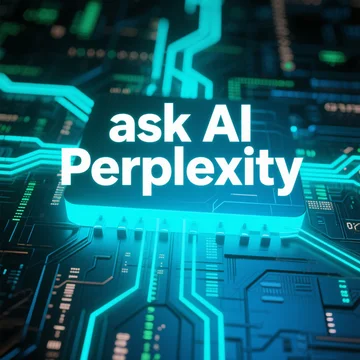Curious about how to ask AI Perplexity questions for the most accurate and insightful results? Whether you’re conducting research, troubleshooting code, or comparing tools, knowing how to structure your prompts makes a big difference. This guide will walk you through expert techniques to interact effectively with Perplexity's AI so that every query delivers high-value answers.

Why It Matters: Asking AI Perplexity the Right Way
At the core of getting the best answers from AI lies your ability to frame the right questions. When you ask AI Perplexity thoughtfully, it can deliver targeted summaries, cite sources, and even suggest comparisons across platforms. Unlike traditional search engines, Perplexity is optimized for natural language queries, so the structure and clarity of your question directly impact the quality of the result.
? Best Practice: Think of Perplexity AI as your research assistant. The clearer and more specific your request, the more useful and contextual its response will be.
Start with a Clear Objective
The first step in learning how to ask AI Perplexity properly is defining your goal. Are you looking for a quick summary, a citation-backed answer, or a comparison between products? The AI model behind Perplexity thrives on specificity, so instead of asking “What is ChatGPT?”, you’ll get better results asking, “What is the difference between ChatGPT and Claude for academic research?”
Examples of Effective Prompts
“Summarize the key features of Notion AI vs Perplexity AI.”
“Give me Python code examples for extracting email addresses from text using regex.”
“Which is better for students: Perplexity AI or Google Scholar?”
Use Context-Rich Details in Your Query
One of the most powerful ways to ask AI Perplexity is by giving it enough background. For example, if you're troubleshooting an error in a coding project, don't just say "fix this error"—instead, provide the error message, the language you're using, and what you've already tried.
Tools like Stack Overflow or GitHub Copilot can help, but Perplexity shines when your queries include code, context, and a goal (e.g., “I want this script to automate data scraping.”).
Make Use of Focus Modes
Perplexity offers different modes to help users get tailored results. When you ask AI Perplexity a question, try choosing a mode that fits your need—like “Academic,” “Coding,” or “YouTube” mode. Each one adjusts how Perplexity pulls and presents its data.
?? Academic Mode
Use for paper writing, thesis research, or summarizing scholarly articles. It pulls from journals and Google Scholar.
?? Coding Mode
Ideal when you want to ask Perplexity AI coding questions with clear examples, syntax checks, or library comparisons.
Ask Follow-Up Questions for Better Precision
One overlooked feature is the ability to refine your results by asking follow-up questions. Once you ask AI Perplexity your initial question, don’t stop there. Ask clarifying questions or request comparisons (e.g., “Compare this with Gemini AI in terms of performance and cost”).
Example Flow for Research
1?? Initial Query: “What are the best AI tools for resume building?”
2?? Follow-up: “Which of these offer free plans with unlimited usage?”
3?? Drill-down: “Can you compare Rezi AI and Kickresume AI?”
Combine with Real-Time Web Access
Unlike some traditional AI models, Perplexity offers real-time access to the internet. This means you can ask AI Perplexity for up-to-date information on breaking news, stock prices, or new AI features—something static models like GPT-3.5 can’t do effectively.
“Perplexity is my go-to when I need quick, source-backed facts,” — Tech reviewer on Reddit
Common Mistakes to Avoid When You Ask AI Perplexity
Using vague prompts like “tell me more” without context.
Asking multiple unrelated questions in one sentence.
Skipping citation requests when doing academic or factual research.
Best Use Cases for Asking Perplexity AI
1. Academic Research – Summarize, cite, and outline complex topics with trusted sources.
2. Coding Help – Debug issues or generate snippets in Python, JavaScript, and more.
3. Product Comparisons – Ask Perplexity AI to compare features, prices, and performance of SaaS tools.
4. Content Planning – Generate outlines, blog ideas, or meta descriptions with SEO focus.
Tools to Pair With Perplexity for Better Output
Grammarly: Polishes AI-generated content for grammar and tone
Notion AI: Great for organizing Perplexity insights into structured notes or blog drafts
ChatGPT: Can rephrase, expand, or add creativity to Perplexity’s factual results
Final Thoughts: Asking AI Perplexity Like a Pro
Knowing how to ask AI Perplexity questions effectively is a skill that pays off in faster, smarter, and more relevant answers. Whether you’re a student, developer, or content creator, the key lies in clarity, specificity, and follow-up. Don't treat it like a search engine—treat it like a smart assistant that thrives on good communication.
Key Takeaways
? Ask clear, specific questions for better results
? Use Perplexity’s focus modes based on context
? Follow up to refine and dive deeper
? Pair with tools like Grammarly and Notion AI
Learn more about Perplexity AI
